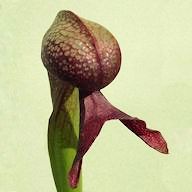Post by fredg on May 12, 2018 15:06:12 GMT
Asplenium × ebenoides
For a very small fern (the photo covers about 1.5 x 1.5" (37.5 x 37.5 mm) this little North American hybrid has quite a history.

For a very small fern (the photo covers about 1.5 x 1.5" (37.5 x 37.5 mm) this little North American hybrid has quite a history.
Asplenium × ebenoides (Scott's spleenwort, dragon tail fern or walking spleenwort) is a hybrid fern native to eastern North America, part of the "Appalachian Asplenium complex" of related hybrids. The sterile offspring of the walking fern (A. rhizophyllum) and the ebony spleenwort (A. platyneuron), A. × ebenoides is intermediate in morphology between its two parents, combining the long, narrow blade of A. rhizophyllum with a dark stem and lobes or pinnae similar to those of A. platyneuron. While A. × ebenoides is generally sterile, fertile specimens with double the number of chromosomes are known from Havana Glen, Alabama. These fertile allotetraploids were reclassified as a separate species named A. tutwilerae in 2007, retaining the name A. × ebenoides for the sterile diploids only.
The hybrid nature of A. × ebenoides was suspected at the time of its discovery in 1862, but the existence of fern hybrids was scientifically controversial at the time. (The existence of the fertile individuals in Havana Glen, discovered in 1873, further confused the issue.) In 1902, Margaret Slosson hybridized A. rhizophyllum and A. platyneuron in pure culture to produce specimens effectively identical to A. × ebenoides, one of the first uses of this technique to demonstrate the parentage of a natural hybrid fern. In 1957, Herb Wagner and Robert S. Whitmire experimentally converted sterile diploid A. × ebenoides to the fertile tetraploid form, the first creation of an allopolyploid fern in the laboratory.
The hybrid nature of A. × ebenoides was suspected at the time of its discovery in 1862, but the existence of fern hybrids was scientifically controversial at the time. (The existence of the fertile individuals in Havana Glen, discovered in 1873, further confused the issue.) In 1902, Margaret Slosson hybridized A. rhizophyllum and A. platyneuron in pure culture to produce specimens effectively identical to A. × ebenoides, one of the first uses of this technique to demonstrate the parentage of a natural hybrid fern. In 1957, Herb Wagner and Robert S. Whitmire experimentally converted sterile diploid A. × ebenoides to the fertile tetraploid form, the first creation of an allopolyploid fern in the laboratory.







 not here it isn't
not here it isn't